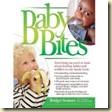
Happy 2011! The Holidays are now behind us and it’s time to get back to business. 2011 is going to be a great year. The economy has shown signs of improvement and more importantly, there is an increased awareness of personal health and wellness. Here is a lot of what is looking to be important in the world of food and nutrition for this year.
Childhood Obesity and Child Nutrition: This is one trend whose time has certainly come. We definitely have a problem here as one in three children born today will develop diabetes at some time in their life. Some researchers have even predicted a decline in life expectancy simply due to rising childhood obesity. The public is starting to realize that a consistent diet of hot dogs, nuggets and fries with soda or other sweetened drinks combined with lack of activity is creating problems with our children.
Locally Grown Food: This boosts the local economy and keeps the farmers in business. Additionally, local or home-grown fruits and vegetables are usually highest in nutrition. They are freshly picked and have not been traveling long distance on a truck or sitting in a warehouse. They do not have to travel far to their destination—your table!
Home canning: Get out the Mason jars! I have fond memories of helping my grandparents on canning day. This is a great way to extend those fresh fruits and vegetables well into the winter. This must be approached with utmost safety, however, to reduce the incidence of food borne illness. Here is a great resource from the NC Cooperative Extension program: www.ces.ncsu.edu/depts/fcs/Preservation/index.html
Men cooking: Love this idea–put on the apron’s, guys! Don’t fear the kitchen. As Julia Child once said, “You don’t have to cook fancy or complicated masterpieces – just good food from fresh ingredients.” Make it work for you.
Simple foods/Back to Basics: The less processing that has been done to our food, the better it typically is for us. Food that is home-cooked from scratch tends to be much lower in saturated fat and sodium and much higher in nutrients.
Social media/food apps: Consumers are downloading food apps on their smart phones to find everything from grocery store coupons to seats at nearby restaurants. Restaurants are utilizing social media to connect with their customers. Plus, it looks like Facebook will have some competition this year. New social networks are in the works to be released early this year, including Google Me and Diaspora.
Meatless Meals: Great trend. John and I often try to get our clients to go meatless at least once a week to save on both money and saturated fat.
Energy Foods: Personally, I would be glad to see this trend quickly fade. These products are marketed as energy for those with hangovers, soccer mom’s, busy executives, college students, etc. Children are especially drawn to them (what child doesn’t want to be a Rockstar?). The problem is that they contain large amounts of both sugar and caffeine. They can increase heart rates and are especially risky for anyone with heart disease or hypertension. We prefer the natural route to increasing energy—exercising, getting adequate sleep and drinking plenty of water!
Things are looking good for Food and Nutrition in 2011. There appears to be an increased focus on fruits and vegetables, home cooking and the health of our children.
What are your personal health goals for this year? I plan to continue to train for and participate in my first triathlon. Please share your personal health goals and comments—we would love to hear them!
Here’s to a Healthy and Happy New Year!
It’s Your Life. It’s Your Health. Make That Change!
~ Angie
For more information on projected trends for 2011, check out these sites:
www.restaurant.org/pdfs/research/whats_hot_2011.pdf
www.foodchannel.com/articles/article/food-channel-predicts-top-ten-food-trends-2011/
www.epicurious.com/articlesguides/blogs/editor/2010/12/food-trend-predictions-for-2011.html
www.stonehearthnewsletters.com/acsms-top-fitness-trends-for-2011/corporate-fitness/









![iStock_000005762739Small[1] (2) iStock_000005762739Small[1] (2)](http://nutritionpair.com/change/wp-content/uploads/2010/04/iStock_000005762739Small12_thumb.jpg)